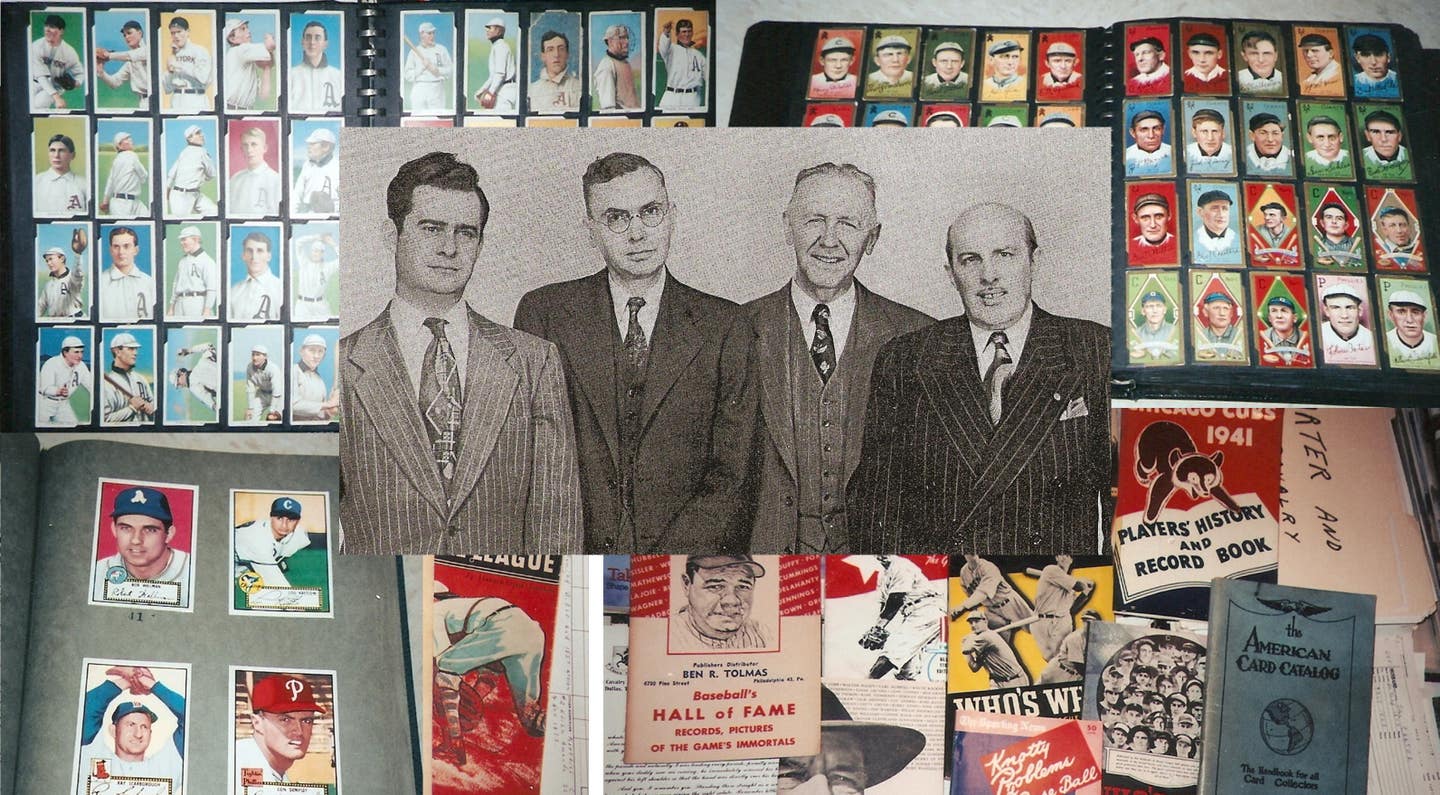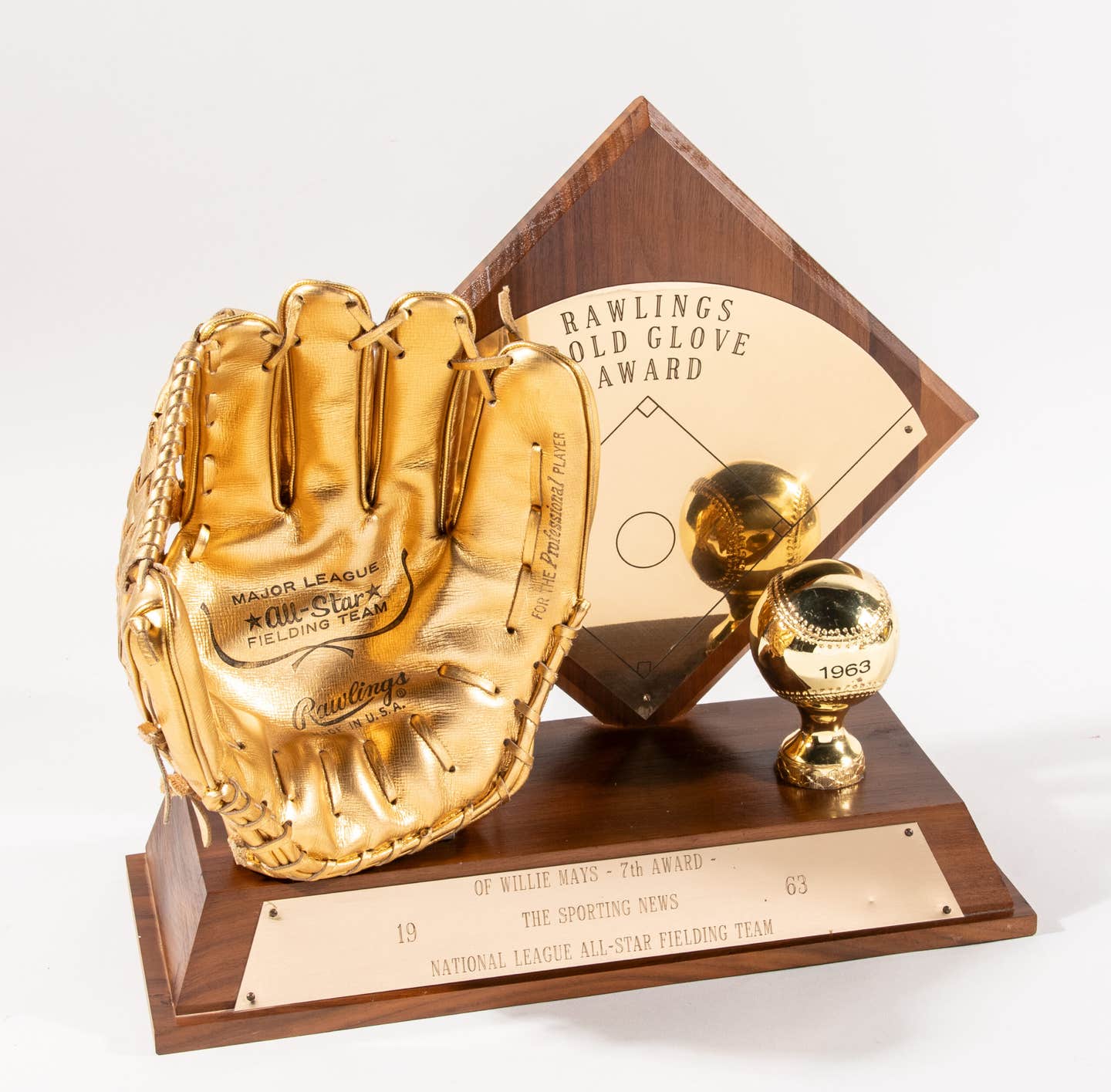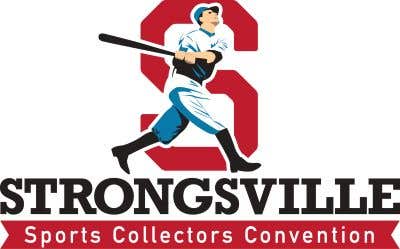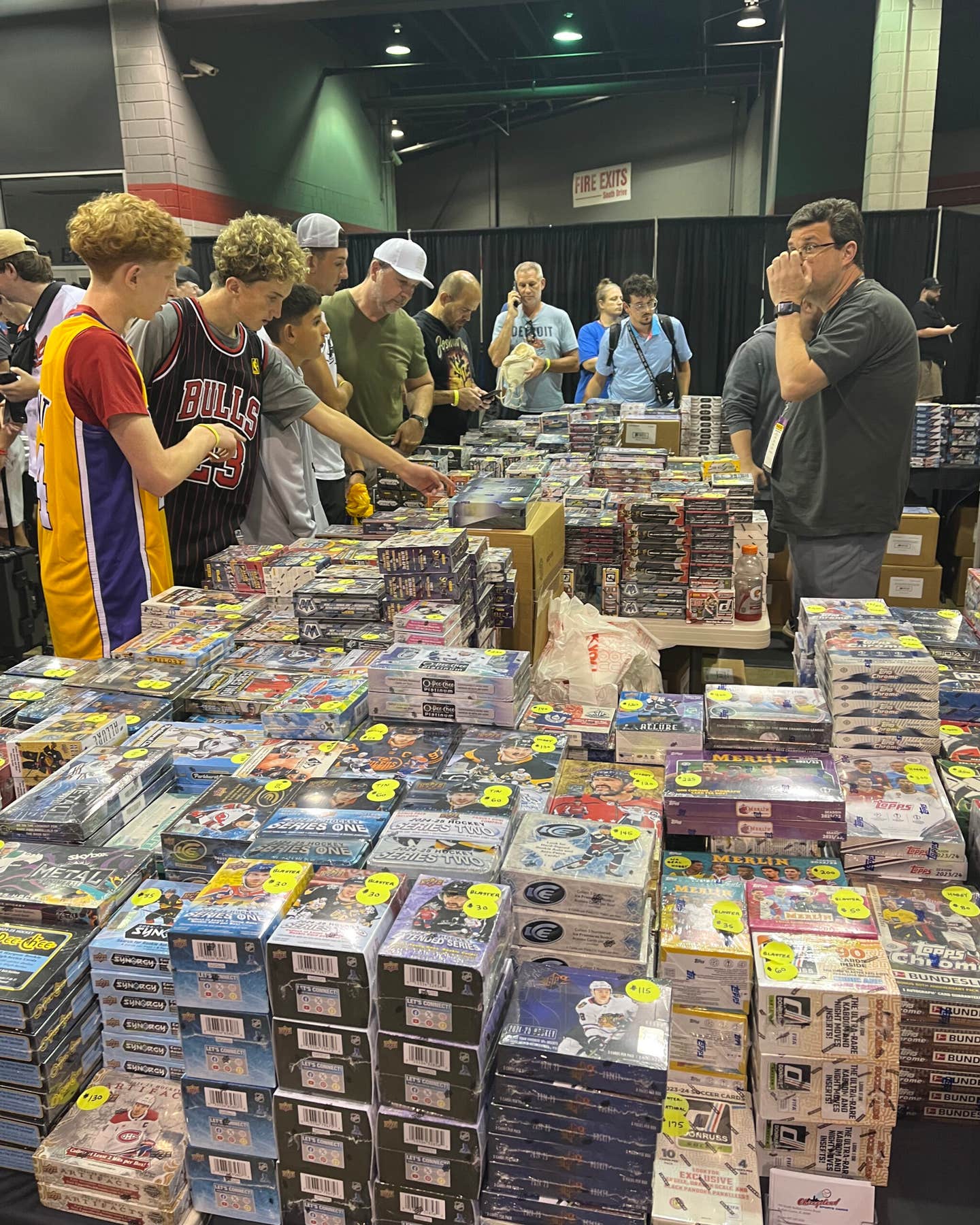
Vintage Card Sets
HOBBY PIONEERS: Honoring early collectors who laid the foundation for the sports collectibles industry
EDITOR'S NOTE: This is Part 1 of a two-part series.
SCD articles on the history of the sports card hobby have mentioned hundreds of hobbyists over the years. Over the past 20 years, I have been fortunate to be able to connect with several of those early dealers and collectors and have heard or read about pioneers who preceded them.
Like organizing a set of cards, it helps to organize some of the names that pop up in the history of the hobby. In Part 1 of this series, I will start by organizing the people I have been able to write about who were born before my arbitrary cutoff date of 1920. Part 2 will pick up with those born in 1920 or later.
Obviously, there is much more that could be mentioned than a few sentences for those listed. If you have been a SCD subscriber, you may recall articles on many of the pioneers. While my listing is intentionally irrefutable (since it only includes people I have written about), there were undoubtedly others who contributed significantly to the hobby. Readers are encouraged to report any such candidates for an “update set.”
Thanks go to hobby history buffs like Richard Rubin, Tim Thornham, David Kathman, Dave Hornish and Leon Luckey who have posted some of the old hobby literature on Net54 and elsewhere.
AGES AND STAGES
When the hobby got organized in the late 1930s, collectors who found each other varied considerably in age. Lionel Carter mentioned that when he wrote to other collectors, he didn’t know if that person was 30, 60 or 15.
Carter seemed to hit it off with people who were interested in the same sets as he was, and often those sets were whatever came out during their initial childhood collecting years. I recently conducted a poll of 50 active vintage card collectors and found that the average childhood card collecting phase for them was between ages 7 and 15. Their favorite sets came out during their first few years of collecting or well before they were born.
The average age that adults returned to card collecting was 32, although 13 percent of respondents never stopped. Thus, it makes sense to list pioneers by their birth years. In some cases, years are best estimates.
1878-1962 ARTHUR H. FOLWELL
Folwell was a writer and editor for the New York Herald Tribune. In his spare time, he wrote gags for a syndicated comic strip titled “Mr. and Mrs.” He also wrote for The New Yorker. One such article appeared in 1929, “A New York Childhood, Cigarette Pictures.”
Folwell accumulated cards from the first tobacco card heyday in the 1880s and wrote about his experiences. His childhood cards were in a box next to him when he wrote the article.
Folwell lived until 1962, but I didn’t find evidence that he connected with other collectors. Any collectors who got back into cards from their 1880s childhood likely assumed that there were few others like themselves. There seemed to be no articles, ads, clubs or manufacturers promoting the hobby.
We will let Arthur Folwell represent all the collectors who scooped up the first tobacco inserts of the 1880s but didn’t have the knowledge or foresight to have them graded, slabbed, insured and stashed away for their great, great grandchildren.
1894-1971 PRESTON OREM
Orem was the oldest of Jefferson Burdick’s 1960 American Card Catalog editors. However, he didn’t get serious about collecting until 1956, when he was 62, an advanced age for a collector to get immersed, which goes against my theory of when people collect.
He was a California attorney and a high roller compared to the rest of the boys. Orem liked baseball and self-published some very dry books on historical baseball statistics.
Perhaps because he was late to the collecting game, some of the other guys scratched their heads as to what he was up to, throwing money around when pennies or stamps had often been the currency of exchanges. Orem was appalled that Burdick’s cards were being pasted into scrapbooks at the Metropolitan Museum of Art in New York (The Met). Frank Nagy bought Orem’s T206 Wagner.
1896-1968 FRANK JOCK
Jock was an avid collector since his boyhood. He stored 1,500 pounds of sports memorabilia in a cottage behind his house. He was an admired collector, and Bob Jaspersen started an award which was given annually after Jock’s death to collectors who had improved the hobby.
Also See: All Things Mickey Mantle
1899-1988 JOHN D. WAGNER
Wagner was one of the initial 15 subscribers in 1937 to Burdick’s Card Collector’s Bulletin (CCB). (It took Burdick a few years to decide that he needed an apostrophe in the title of his publication.) Wagner started collecting in 1909. His education was one year of high school. He served in WW II and was a master sergeant in the U.S. Air Force in Korea.
Wagner was a generous baseball card collector. By 1936, Burdick and Wagner had started exchanging tobacco card albums with an assigned value of $1 to each album full of cards.
In 1943 Burdick traded one of his two T206 Eddie Plank cards to Wagner. Around 1950, Wagner gave Burdick one of his extra T206 Honus Wagner cards. Burdick insisted on paying him $25 and then donated the card to The Met.
Burdick said that Wagner was better at finding cards he needed than he was. Wagner sent fellow veteran Lionel Carter a shoebox full of tobacco cards in 1946, which Carter promptly returned but ultimately traded Wagner back for some of the same cards.
1899-1987 CHARLES BRAY
Bray started running auctions in CCB in the early 1940s, took over from Burdick as CCB editor in 1949 and kept publishing CCB into the 1980s. He sold his 200,000-card collection to E.C. Wharton-Tigar in 1965.
Burdick often visited Bray in Pennsylvania and was happy that Bray took over the considerable work of running CCB. In exchange Bray ran CCB consignment auctions, which netted him a commission.
1899-1966 WALT CORSON
Like Burdick, Corson collected more than 300,000 cards, containing 616 complete sets. He briefly operated Collector’s Haven, selling cards in Philadelphia in 1947 and 1948. In 1957 he had cancer surgery and wrote in Sport Hobbyist about selling his collection, for which he had spent more than $40,000. He had the T206 set complete except for Wagner, and he had 600-plus duplicate sets.
Corson also collected postcards (pre-1914 only), guides and books. He said that he played minor league baseball. He was a CCB writer and co-editor of the ACC. He finally sold his collection to Frank Nagy, who mentioned Corson’s zeal for collecting contributed to financial and other difficulties.
1900-1963 JEFFERSON R. BURDICK
Burdick was called the “Father of Card Collecting.” His life revolved around cards and he reached out to find other collectors, first through O.C. Lightner’s Hobbies magazine in 1935. Burdick was interested in all cards, regardless of the subjects. Ninety percent of his collection was non-sport cards.
He started the CCB and every seven years published the American Card Catalogs, despite limitations due to crippling arthritis that took his life in 1963. He donated his 306,000-card collection to The Met, where it resides today. Burdick wrote about his fond memories of the tobacco cards, which came out around 1909 when he was a boy in Central Square, New York.
Burdick’s eventual card-collecting buddies included Pennsylvanians Wagner, Bray and Corson, who were all born within a year of one another and likely collected the same sets around 1909. They returned to collecting while in their 30s, which surprisingly matches my current survey findings. Since collectors in the early days of the organized hobby were relatively young, many were still alive when the hobby became more visible in the 1970s and 1980s.
1902-1970 (est.) EDWARD GOLDEN
Golden was an early CCB subscriber and contacted Lionel Carter in 1938 to trade Batter-Ups and to let Carter know about Burdick’s work. Unlike many of Burdick’s early contacts, Golden, Carter and Wagner were strictly interested in sports cards.
1903-1980 HARRY KENWORTHY
Kenworthy taught high school in California and spent summers roaming the country buying sports cards wherever he could find them. He tossed them in barrels in the back of his old station wagon, according to Carter. His collection sold for $60,000 in 1980.
Also See: New U.S. coins commemorate Negro Leagues
1905-1982 (est.) FRED BAUM
Baum was one of the earliest CCB subscribers and was with Burdick in his final years in New York City, helping him paste cards into scrapbooks at The Met. He raised money to honor Burdick with a plaque at The Met.
1906-1985 WIRT GAMMON SR.
Gammon was a sports columnist for the Chattanooga Times, who wrote for hobby periodicals and advertised frequently to buy cards. At one point he made a deal to obtain three Wagners and three Planks.
1910-1990 (est.) GENE DE NARDO
De Nardo was the last surviving ACC editor. He met Burdick in Syracuse in 1947 and got involved writing articles for CCB and editing the 1953 ACC and the 1956 update for “recent” cards.
Lew Lipset interviewed De Nardo for a 1986 article in his Old Judge publication. De Nardo said that Burdick was highly intelligent. “He was never interested in selling his cards but preferred to trade for what he needed,” he said.
Note that pioneer collectors liked the idea of trading. If you valued a 1909 tobacco album full of cards at $1 and traded it for another $1 album, both collectors were even. However, if the $1 value really should have been $100, and you sold the album for Burdick’s $1 “book value,” you might soon regret it.
De Nardo was in touch with Burdick while he worked on mounting his collection at The Met and commented, “He told me that when he finished that job, he felt his life’s work was over, and his words were strangely prophetic.”
1911-1982 CHARLES “BUCK” BARKER
Barker connected with Burdick and became a frequent hobby writer by the 1950s. His writing style was energetic, if not entirely logical or organized. He contributed many checklists for sets and was the ACC editor focused on baseball issues. One of his goals was to collect a card or photo of every player who had ever appeared in the majors, which got him into obscure and foreign sets.
He was in the St. Louis Collectors Club and was generous in trading or selling his cards. Like Burdick, he would often write or stamp his name in ink on the backs of cards he sent around. Roger Neufeldt remembered that Barker would walk into a show, and club members would line up to buy cards from him.
1913-1995 E.C. WHARTON-TIGAR
Wharton-Tigar was the chairman of the Cartophilic Society of Great Britain, a WW II spy, a mining company executive and wealthy enough to afford card collecting trips from England to North America.
He took Bray and Burdick to a baseball game in New York. He bought Bray’s collection in 1965 and accumulated 2 million trading cards, which he donated to the British Museum. He was likely the highest roller among the early collectors.
1914-2012 GOODWIN “GOODIE” GOLDFADEN
Goldfaden was a sports book dealer and handled cards as well. In 1925 Goodie and his brother, Jack, sold programs and pennants outside Cleveland’s League Park. He decided to specialize in selling sports publications and moved to Los Angeles in 1947 where he opened Adco Sports Book Exchange. He kept selling until his death in 2012.
Numerous collectors, coaches and athletes became customers, and all must have stories to tell about him. He was described as a dynamo, a bulldog, and incredibly sharp with a great memory. I bought his remaining inventory of sports hobby publications, but you could never be sure with Goodie. He told me he had sold out everything he had, more times than he could remember, but that stuff had a way of finding its way to him again.
1915-1978 WOODY GELMAN
You might describe Woody Gelman as an artist dealing with “pulp fiction.” Gelman and his business partner, Ben Solomon, were hired by Topps to develop the concepts and art for new products, especially non-sport sets. He sat with then 28-year-old Sy Berger at Berger’s kitchen table developing the 1952 Topps card design. He listened to (and hired) kids like Len Brown to find out what interested his target market, much like listening to Tom Hanks in the movie “Big.”
Topps artists under Gelman were known for their creativity and humor, which appealed to kids. Years later, Topps employee Mike Jaspersen described them as “just nuts” — as a compliment.
Starting in the 1950s, Gelman and his father-in-law, Sam Rosen, operated The Card Collectors Company dealing with Topps products. He was a big admirer of Burdick and was one of the editors for the 1953 and 1960 ACCs. He reprinted the ACC in 1967. After Gelman’s death, his son Richard took over the operation.
1918-2008 (GEORGE) LIONEL CARTER
Carter discovered DeLong cards in a store in his hometown of Colfax, Ill. in 1933 and began a life-long pursuit of baseball cards. Connecting with Burdick by mail in 1938 was another milestone. Carter was a talented writer who was organized and fastidious. He was an early advocate of quality, but he got along well with Buck Barker who really didn’t fuss about card condition.
During WW II he had CCB sent to his mother and a second copy sent to him wherever the Army took him. He wound up behind enemy lines at one time in New Guinea. He kept his CCBs in a plastic bag and out of the mud.
He was always looking to upgrade, although he never had a card graded prior to the sale of his collection in 2006. He and his wife, Irma, met Burdick for the first time in Chicago in 1952 and drove to Syracuse to see Burdick in 1955. Carter generously shared his hobby knowledge with those of us who expressed interest and an appreciation of the hobby. My many meetings with Lionel Carter got me interested in writing more about the history of the hobby.
1919-2012 ELWOOD “WOODY” SCHARF
If you were interested in the details of exhibit cards, Elwood “Woody” Scharf was the man to check with. His series of articles about exhibits, written 40 years ago for The Trader Speaks magazine, showed his organization and understanding of the complicated approach of the Exhibit Supply Company. He also wrote about the timing of the 1933 Goudeys as he bought them at stores through October 1933.
AND THERE WERE MORE
Some of the other names which appeared in the earliest days of the hobby include Larry Kurzrok, Ed Lancaster, Howard Leheup, Stan McClure, Howard M. Myers, A.O. Philipp, Harold Ross, Samuel Tanenbaum, Fanny Troyer, Donald Van Brakle, Steve Vanco and Jake Wise.
THEIR COLLECTIVE COLLECTIONS
Among these 18 pioneer collectors, few of them were wealthy, and they spent modest amounts on their collections. They met one another, perhaps, only a few times.
However, among just these 18 people, they likely had more vintage cards than we can even imagine — Burdick (300,000), Corson (300,000), Bray (200,000), E.C. Wharton-Tigar (2,000,000), Carter (50,000), Orem (50,000), plus likely hundreds of thousands more among the other 12 collectors.
They had T206 complete sets, nineteenth century tobacco cards, Goudeys, Topps and rare cards now housed in museums. The 18 probably owned nearly every known sports card issued before 1960. To duplicate their collections today would be even more expensive than getting a decent left-handed starting pitcher under a long-term major league contract.
In Part Two, we will cover collectors born between 1920 and 1939.
— George Vrechek is a freelance contributor to SCD and can be contacted at vrechek@ameritech.net.








